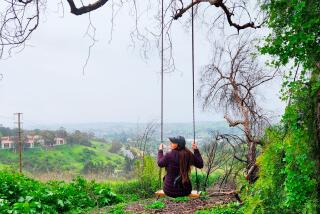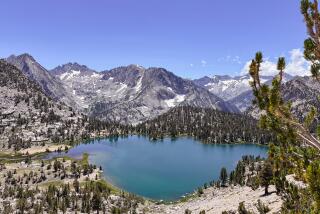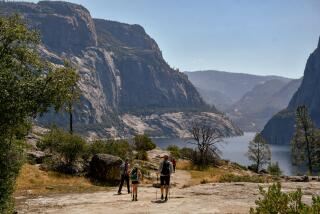THE OUT-OF-VALLEY EXPERIENCE I : DELANEY MEADOW
After a long ramble through the dense encumbered woods, I emerged upon a smooth meadow full of sunshine like a lake of light, about a mile and a half long, a quarter to half a mile wide and bounded by tall arrowy pines . ...
All the glacier meadows are beautiful, but few are so perfect as this one. Compared with it, the most carefully leveled, licked, snipped artificial lawns of pleasure grounds are coarse things. I should like to live here always. It is so calm and withdrawn while open to the universe in full communion with everything good.
--JOHN MUIR
âMy First Summer in the Sierraâ
I WENT TO the high country on a trek to retrace some of John Muirâs legendary ramblings and to see how the wilderness has fared in the century since Yosemite became a park. I wanted to see the park as Muir had seen it; I followed his footsteps and carried his journals in my pack.
John Muirâs favorite Yosemite meadow was easy to find: I walked north on the Dog Lake Trail and up into the lodgepole pine forest, leaving behind the clamor and fumes of the Lembert Dome parking lot and the breakfast-hour stirrings of the sprawling Tuolumne Meadows campground.
The trail forks after about one mile. Go to the left and in just a few minutes, the wanderer in this Yosemite centennial year comes upon the scene that enraptured Muir on Aug. 11, 1869.
I dutifully took notes on how Delaney Meadow looked compared with Muirâs descriptions. There are surprisingly few differences: the presence of the trail and the absence of grazing sheep (in the 1860s, rancher Pat Delaney ran thousands of sheep on the meadow). I drank some water and downed a candy bar. I almost fell into the trap of being in too much of a hurry. I had to take Muirâs advice to âlinger awhile,â to make myself stop and savor this meadow.
Delaney Creek curved left and then right, its flow racing around the turn in a series of rippled patterns that were always slightly different. The slower water backwashed lazily along the far bank and then was drawn back into the main current. The water sparkled against the creek bed of polished yellow pebbles, the residue of thousands of years of mountain sculpture. The ripples made a gentle bubbling sound that could be heard only by someone sitting on the bank doing nothing. Fingerling trout darted upstream and back, their tiny shadows struggling to keep up the random dashing.
At close range, the meadow came to life. Bees flew a zigzag course from one flower to the next and curiously inspected the intruder. Now and then, a fly buzzed. Ants toiled against the day, never far off, that the snow flowers would return. Fifty feet upstream, a gopher stretched into total alertness on its hind feet, a small quivering radar antenna, then dashed from its perch, ran after an approaching gopher and disappeared into the meadow underworld. A white-headed woodpecker flew from tree to tree along the forest perimeter. A robin, leaner than its city cousins, hopped and probed the meadow grass for lunch.
The creek bank was dotted with buttercups, goldenrod and a single brilliant purple-red paintbrush no more than two inches tall.
Similar experiences in Delaney Meadow prompted Muir to write, âFor my part, I should like to stay here all winter, or all my life, or even all eternity.â
More to Read
Sign up for The Wild
Weâll help you find the best places to hike, bike and run, as well as the perfect silent spots for meditation and yoga.
You may occasionally receive promotional content from the Los Angeles Times.






